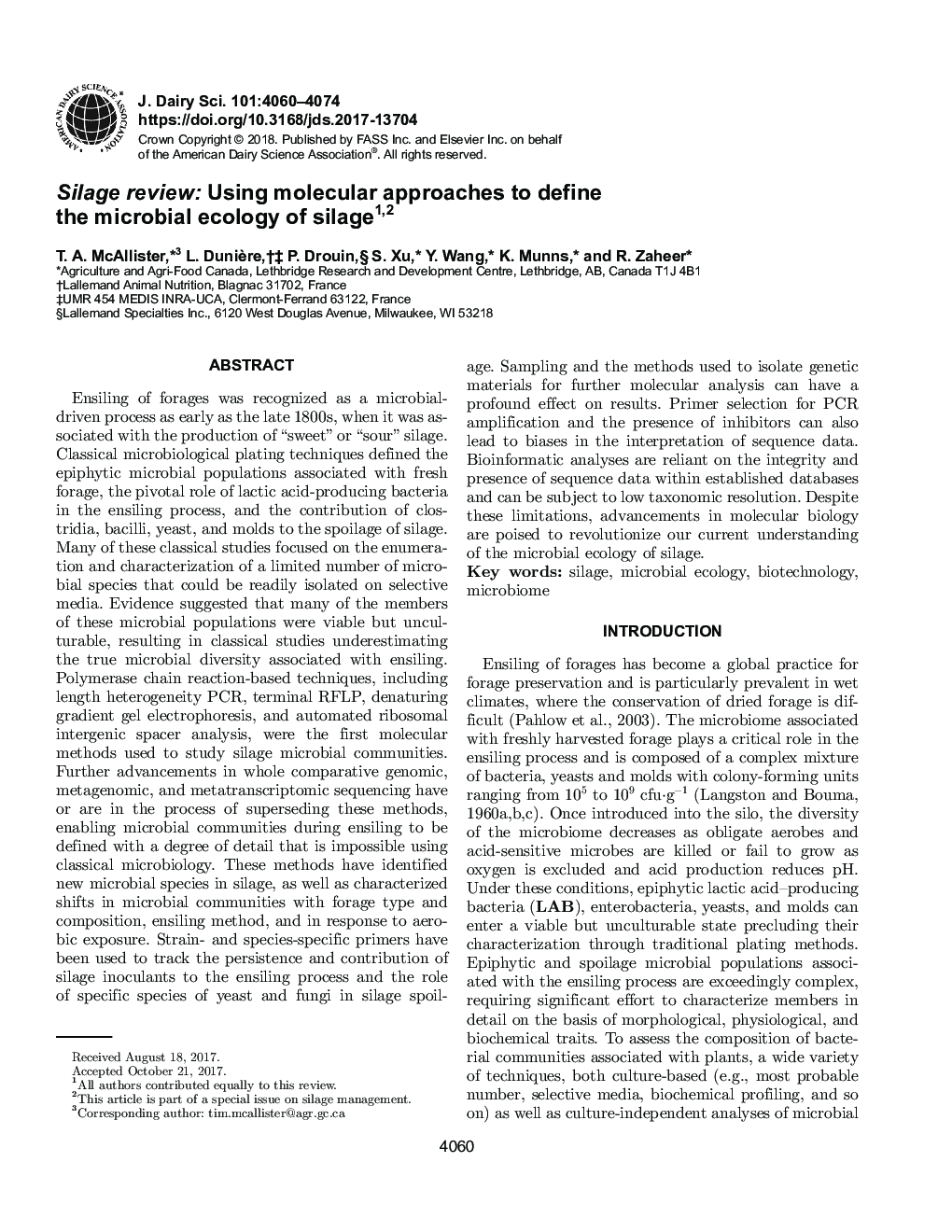| کد مقاله | کد نشریه | سال انتشار | مقاله انگلیسی | نسخه تمام متن |
|---|---|---|---|---|
| 8501249 | 1553840 | 2018 | 15 صفحه PDF | دانلود رایگان |
عنوان انگلیسی مقاله ISI
Silage review: Using molecular approaches to define the microbial ecology of silage
ترجمه فارسی عنوان
بررسی سیلیس: استفاده از رویکردهای مولکولی برای تعریف محیط زیست میکروبی سیلو
دانلود مقاله + سفارش ترجمه
دانلود مقاله ISI انگلیسی
رایگان برای ایرانیان
کلمات کلیدی
سیلیس، محیط زیست میکروبی، بیوتکنولوژی، میکروبیوم
موضوعات مرتبط
علوم زیستی و بیوفناوری
علوم کشاورزی و بیولوژیک
علوم دامی و جانورشناسی
چکیده انگلیسی
Ensiling of forages was recognized as a microbial-driven process as early as the late 1800s, when it was associated with the production of “sweet” or “sour” silage. Classical microbiological plating techniques defined the epiphytic microbial populations associated with fresh forage, the pivotal role of lactic acid-producing bacteria in the ensiling process, and the contribution of clostridia, bacilli, yeast, and molds to the spoilage of silage. Many of these classical studies focused on the enumeration and characterization of a limited number of microbial species that could be readily isolated on selective media. Evidence suggested that many of the members of these microbial populations were viable but unculturable, resulting in classical studies underestimating the true microbial diversity associated with ensiling. Polymerase chain reaction-based techniques, including length heterogeneity PCR, terminal RFLP, denaturing gradient gel electrophoresis, and automated ribosomal intergenic spacer analysis, were the first molecular methods used to study silage microbial communities. Further advancements in whole comparative genomic, metagenomic, and metatranscriptomic sequencing have or are in the process of superseding these methods, enabling microbial communities during ensiling to be defined with a degree of detail that is impossible using classical microbiology. These methods have identified new microbial species in silage, as well as characterized shifts in microbial communities with forage type and composition, ensiling method, and in response to aerobic exposure. Strain- and species-specific primers have been used to track the persistence and contribution of silage inoculants to the ensiling process and the role of specific species of yeast and fungi in silage spoilage. Sampling and the methods used to isolate genetic materials for further molecular analysis can have a profound effect on results. Primer selection for PCR amplification and the presence of inhibitors can also lead to biases in the interpretation of sequence data. Bioinformatic analyses are reliant on the integrity and presence of sequence data within established databases and can be subject to low taxonomic resolution. Despite these limitations, advancements in molecular biology are poised to revolutionize our current understanding of the microbial ecology of silage.
ناشر
Database: Elsevier - ScienceDirect (ساینس دایرکت)
Journal: Journal of Dairy Science - Volume 101, Issue 5, May 2018, Pages 4060-4074
Journal: Journal of Dairy Science - Volume 101, Issue 5, May 2018, Pages 4060-4074
نویسندگان
T.A. McAllister, L. Dunière, P. Drouin, S. Xu, Y. Wang, K. Munns, R. Zaheer,
